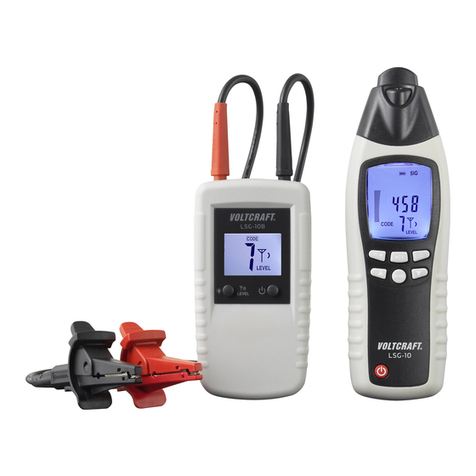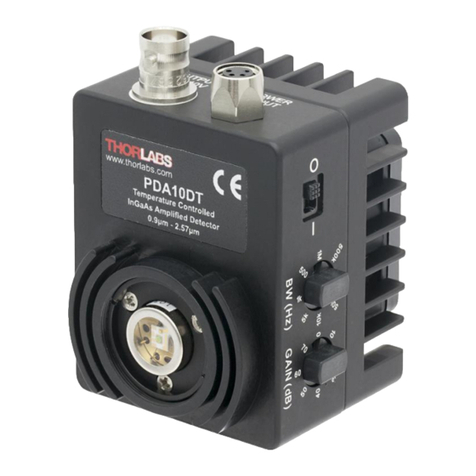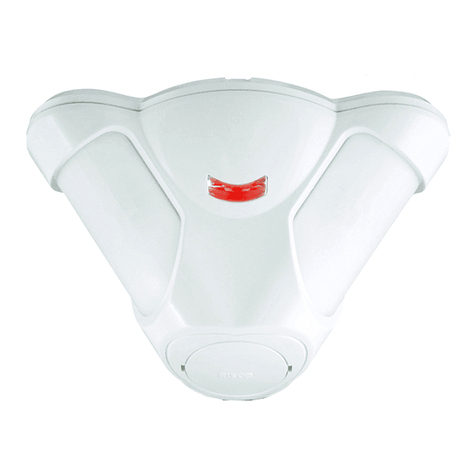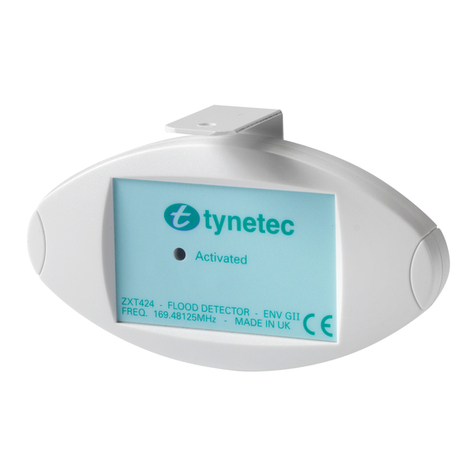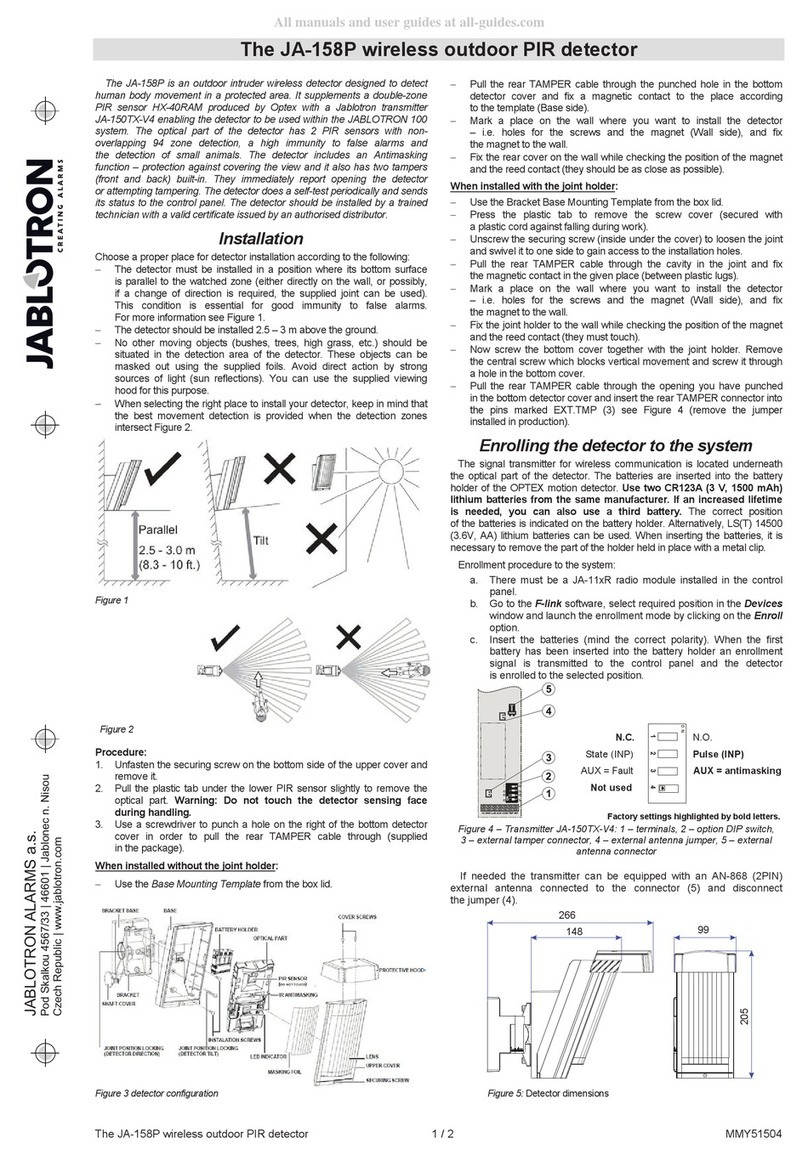Thermocable ProReact EN Analogue User manual

Page 1 of 29 Revision 3.3 Feb 2021
ProReact EN Analogue Installation Manual
Document Ref. PACC-MAN
ProReact EN Analogue
Linear Heat Detection System
Installation Instructions
World leading linear detection
www.thermocable.com
Linear Detection Technology Made Simple
Page 1 of 29 Revision 3.3 Feb 2021
ProReact EN Analogue Installation Manual
Document Ref. PACC-MAN

Page 2 of 29 Revision 3.3 Feb 2021
ProReact EN Analogue Installation Manual
Document Ref. PACC-MAN
VdS EN54-22:2015+A1:2020 Approval
Approval Specics
Certicate No: G 220006
Holder of the Approval: Thermocable Flexible Elements Ltd, Pasture Lane, Clayton, Bradford, BD14 6LU UK
Subject of Approval: Resettable line-type heat detector (ProReact EN Analogue)
Use: in automatic re detection and re alarm systems
Basis of Approval: VdS 2344:2014-07
VdS 2543:2018-05
EN54-22:2015+A1:2020
Environmental Group: II (All components)
Approval Components
Part No Description EN54-22 Denition
A1389 ProReact EN Analogue Composite Control (PACC) Unit Sensor Control Unit
A1470 ProReact EN Analogue End-of-line Unit Functional Unit
A1471 ProReact EN Analogue Junction Box Functional Unit
F3050 ProReact EN Analogue PVC Coated Sensor Cable Sensing Element
F3051 ProReact EN Analogue Nylon Coated Sensor Cable Sensing Element
F3052 ProReact EN Analogue PVC and Stainless Steel braided Sensor Cable Sensing Element
Response Classes
Sensor
Control Unit
Sensing
Element
Controller
Parameter
Response
Classication
Max Sensor
Cable Zone
Length
Min Sensor
Cable Zone
Length
Typical
Application
Temperature
Max
Application
Temperature
ProReact EN
Analogue
Composite
Control Unit
ProReact EN Analogue PVC
Coated Sensor Cable
Class A1I/A2I A1I 500m 50m 25°C 50°C
ProReact EN Analogue
Nylon Coated Sensor Cable
ProReact EN Analogue PVC
and Stainless Steel braided
Sensor Cable
ProReact EN
Analogue
Composite
Control Unit
ProReact EN Analogue PVC
Coated Sensor Cable
Class A1I/A2I A2I 500m 50m 25°C 50°C
ProReact EN Analogue
Nylon Coated Sensor Cable
ProReact EN Analogue PVC
and Stainless Steel braided
Sensor Cable
ProReact EN
Analogue
Composite
Control Unit
ProReact EN Analogue PVC
Coated Sensor Cable
Class BI BI 500m 30m 40°C 65°C
ProReact EN Analogue
Nylon Coated Sensor Cable
ProReact EN Analogue PVC
and Stainless Steel Braided
Sensor Cable

Page 3 of 29 Revision 3.3 Feb 2021
ProReact EN Analogue Installation Manual
Document Ref. PACC-MAN
UL 521 (Category Code UQGS) Listing
Approval Specics
UL File No: S8976
UL Category (CCN): UQGS
Holder of Approval: Thermocable Flexible Elements Ltd Pasture Lane Clayton Bradford BD14 6LU UK
Subject of Approval: Heat-automatic Fire Detectors
Requirements: UL521 “Heat Detectors for Fire Protective Signaling Systems”
Approval Components
UL Model No Thermocable Part No Thermocable Description
A1389 ProReact EN Analogue A1389 ProReact EN Analogue Composite
Composite Control Unit accessory Control unit
for use with Heat Detection Cable
ProReact End-Of-Line Module Heat A1470 ProReact EN Analogue End-of-line Unit
Detector Accessory
ProReact EN Analogue Heat Detection F3050 ProReact EN Analogue PVC coated
Cable (1) (p/n F3050) Sensor Cable
ProReact EN Analogue Heat Detection F3051 ProReact EN Analogue Nylon Coated
Cable with nylon outer jacket (1) (p/n F3051) Sensor Cable
Response Classes
Model No. Type Compatibility
Restrictions
Contact
Arrangement
Temp Range
(°F)
Spacing Ft
(Smooth Ceiling)
Spacing Ft
(to Wall or Partition)
A1389
ProReact EN Analogue
Composite Control Unit
accessory for use with Heat
Detection Cable
HSC None – – – –
ProReact EN Analogue Heat
Detection Cable (1) (p/n F3050)
HSC D1 NO 129 - 212 35 17.5
ProReact EN Analogue Heat
Detection Cable with nylon
outer jacket (1) (p/n F3051)
D1 - Listing limited to specic system control unit. Information on compatible control unit indicated on installation drawing of control
unit and/or detector.
(1) - The Models ProReact EN Analogue Heat Detection Cable and ProReact EN Analogue Heat Detection Cable with nylon outer jacket
must be used with an A1389 ProReact EN Analogue Composite Control Unit accessory and a ProReact End-Of-Line Module Heat
Detector Accessory.

Page 4 of 29 Revision 3.3 Feb 2021
ProReact EN Analogue Installation Manual
Document Ref. PACC-MAN
Contents:
Important - Read before commencing installation Page 5
General Overview Page 6
Theory of Operation Page 7
Alarm temperatures
Pre-alarm temperatures
Application temperatures
Technical Specications Page 10
ProReact EN Analogue Composite Control Unit
ProReact EN Analogue End-of-line Unit
ProReact EN Analogue Sensor Cable
Mounting instructions Page 14
ProReact EN Analogue Composite Control Unit
ProReact EN Analogue End-of-line Unit
ProReact EN Analogue Sensor Cable
Area Protection Page 16
Control Unit Wiring Page 17
Remote Reset
Modbus RS-485 RTU/ASCII
Hazardous Area Installation
Typical System Wiring Page 18
Useful information Page 19
Leader Cable
Low Temperature Considerations
Joining Sensor Cable
Commissioning Page 20
Normal Operation
Fault conditions
Alarm conditions
Resetting the control unit after an alarm condition
Testing and Verication Page 24
Re-commissioning the ProReact EN Analogue Composite Control Unit Page 25
Glossary Page 26
Appendix A - Alarm Temperature Charts Page 27

Page 5 of 29 Revision 3.3 Feb 2021
ProReact EN Analogue Installation Manual
Document Ref. PACC-MAN
Important - Read before commencing installation
Please read this instruction leaet thoroughly before commencing installation and ensure all
recommendations and advice are followed.
Install the ProReact EN Analogue Linear Heat Detection System accordingly to meet local and country
installation requirements.
For UL Listed installations, ProReact EN Analogue linear heat detection cable must be installed in
accordance with NFPA 70 & 72, NEC 760 (National Electric Code).
For EN54-22 approved installations, ProReact EN Analogue linear heat detection cable must be installed
in accordance with DIN VDE 0833-2 or country equivalent (such as BS 5839-1).
Installation of the ProReact EN Analogue Linear Heat Detection System should only be undertaken by
trained, qualied personnel.
Avoid allowing the detection cable to come in contact with any material which acts as a
heat sink. This may aect the activation of the cable in alarm situations.
Do not connect lengths of ProReact EN Analogue Linear Heat Detection cable in ‘T’
connections or spurs.
Do not paint the detection cable.
Do not place the detection cable under excessive tension.
Do not bend the detection cable at right angles. Refer to the minimum bend radius
value for each sensor cable type.
Avoid subjecting the detection cable to mechanical damage which could result in false
activation.
Avoid laying the detection cable in areas where heavy trac may result in the cable
being crushed.
Do not use ProReact EN Analogue sensor cable with dierent three letter codes on
the same zone. ProReact EN Sensor cables with dierent three letter codes must use
separate ProReact EN Analogue Composite Control Units.
Support the detection cable at a maximum of 0.5m (1.5ft) intervals.
Test the detection cable on the reel, before installation, using a multimeter.
Ensure the maximum ambient temperature of the application will not exceed the
allowed maximum application temperature for the chosen alarm temperature.
When protecting an area, ensure adjacent runs of detection cable are spaced at less
than or equal to the maximum allowed spacing detailed in the corresponding re
alarm system design standard.
Ensure the detection cable is not in contact with any material which may conduct
heat onto the cable. A silicone sleeve must be placed between the xing clip and
detection cable.
Ensure any cable glands used are tightened to form a secure, moisture proof seal
around the detection cable. Some applications may benet from silica gel packets in
the control unit and end-of-line enclosures to dry out any residual moisture.
Periodically test the ProReact EN Analogue Linear Heat Detection system to ensure
correct operation of the system.
Ensure between 1% to 3% of the ProReact EN Analogue sensor cable is accessible
post-installation to allow functional testing to be carried out

Page 6 of 29 Revision 3.3 Feb 2021
ProReact EN Analogue Installation Manual
Document Ref. PACC-MAN
General Overview
Introduction
Thermocable’s ProReact EN Analogue Linear Heat Detection (LHD)
system comprises of ProReact EN Analogue Linear Heat Detection (LHD)
sensor cable, a ProReact EN Analogue Composite Control Unit and a
ProReact EN Analogue end of line unit. The system oers alternative
overheat protection in a vast range of applications and industries, from
power generation to oil and gas industries.
The ProReact EN Analogue technology oers separate Pre-Alarm and
Alarm outputs in order to maximise functionality, coupled with open
and short circuit detection and discrimination.
Ambient temperature compensation maintains alarm temperature
accuracy. The system is also resettable following an overheat or re
condition if the components are not exposed to temperatures above
the maximum recoverable temperature.
Using a zone or switch monitor, or input/output module, the
ProReact EN Analogue LHD system can easily be interfaced to
an addressable loop. Alternatively it can be directly connected
to the initiating zone of any conventional re alarm control panel
(as shown below).
Figure 1. Typical Installation of the ProReact EN Analogue LHD System
Addressable
Fire Alarm
Panel
ProReact EN Analogue
LHD sensor cable
ProReact EN Analogue
End-of-Line Unit
Connecting
Cable
ProReact EN Analogue
Composite Control Unit
Addressable Loop
Addressable
switch/zone
monitor
Conventional
Fire Alarm
Panel
(Power suppply &
Modbus connections not shown)
Area requiring
protection

Page 7 of 29 Revision 3.3 Feb 2021
ProReact EN Analogue Installation Manual
Document Ref. PACC-MAN
Theory of Operation
The ProReact EN Analogue LHD system uses a heat sensitive cable to
monitor an area, critical equipment or the like, for an overheat or re
condition.
The ProReact EN Analogue Composite Control Unit continuously
monitors the resistance of temperature sensitive polymers within the
ProReact EN Analogue LHD cable. The resistance of the ProReact EN
Analogue LHD cable decreases as the temperature around the cable
increases. An abnormal change in resistance, due to an overheat
condition, along the cable triggers either a Pre-Alarm or Alarm on
the ProReact EN Analogue Composite Control Unit. The ProReact EN
Analogue Composite Control Unit can be interfaced to a conventional or
addressable re alarm system.
For the alarm temperature to be stable across a range of ambient
temperatures, the ProReact EN Analogue Composite Control Unit
measures the average ambient temperature across the entire cable and
dynamically adjusts the alarm threshold accordingly.
It is important therefore to ensure that the ProReact EN Analogue
Composite Control Unit is set up correctly and the cable resistance and
the average ambient temperature as shown on the ProReact EN Analogue
Composite Control Unit are as expected. See the Commissioning section
for more information about setting up a ProReact EN Analogue LHD
system.
Alarm Temperatures
The ProReact EN Analogue LHD system is designed so that an alarm will
be triggered when the temperature around a section of ProReact EN
Analogue LHD cable (equal to 3% of its total length) reaches a nominal
alarm temperature predetermined by the chosen setting on the ProReact
Composite Control Unit (as shown in Table 1).
The actual exposure temperature required to trigger an alarm will
be lower than the nominal alarm temperature (as shown in Table 1)
if a larger section of ProReact EN Analogue LHD cable is exposed
to an abnormal rise in temperature. Likewise, the actual exposure
temperature will be higher that the nominal alarm temperature
if a shorter section of ProReact EN Analogue LHD cable is exposed
to an abnormal rise in temperature.
When the sensor cable is installed and operated in hotter environments,
the sensor cable may need to be exposed to a higher temperature than
that required in a cooler environment in order to trigger an alarm for a
given setting on the ProReact EN Analogue Composite Control Unit. In
such circumstances, the ProReact EN Analogue Composite Control Unit
dynamically adjusts the alarm threshold to reduce the likelihood of false
alarms.
Refer to the “Application Temperatures” section for more information on the
typical and maximum application temperature for each controller setting.
Please refer to the charts on the following page for illustrative examples
of the expected temperature a given portion of Analogue LHD cable
must be exposed to in order to trigger an alarm by ProReact Composite
Control Unit setting.
Rate-of-rise activation
Note: for the Class A1I/A2I, 54°C and 64°C Alarm settings the control
unit will also trigger an alarm if approximately 2% of the sensor cable is
heated at more than 15°C per minute for longer than 3 minutes. This will
show as a rate alarm (see step 25 in the commissioning procedure).
VdS EN54-22:2015
+A1:2020 Approved
UL listed
(UQGS) Available Controller Setting Nominal Alarm Temperature
°C °F
3 ✗ Class A1I/A2I 66 151
3 ✗ Class BI 80 176
✗ 3 54 54 129
✗ 3 64 64 147
✗ 3 72 72 162
✗ 3 79 79 174
✗ 3 86 86 187
✗ 3 100 100 212
Table 1 - ProReact EN Analogue Composite Control Unit settings & nominal alarm temperatures in typical
application temperatures (based on 3% of total cable length)

Page 8 of 29 Revision 3.3 Feb 2021
ProReact EN Analogue Installation Manual
Document Ref. PACC-MAN
Alarm Temperatures (cont.)
Illustrative examples for the other ProReact EN Analogue Composite Control Unit settings can be found in Appendix A.
Chart 1 - Expected temperature required for an alarm in relation to percentage of ProReact EN Analogue LHD Cable in Class A1I/A2I Setting
Chart 2 - Expected temperature required for an alarm in relation to percentage of ProReact EN Analogue LHD Cable in Class BI Setting
010 20 30 40 50 60 70 80 90 100
0
20
40
60
80
100
120
140
C lass A 1 I/A 2 I
(Typical Application Tem perature of 25 deg C)
Typical Application Temp (25 Deg C) Max Application Temp (50 Deg C)
T e m p e ra tu re re q u ire d fo r a la rm (d e g C )
010 20 30 40 50 60 70 80 90 100
0
20
40
60
80
100
120
140
C l a s s B I
(Typical Application Tem perature of 40 deg C)
Typical Application Temp (40 Deg C) Max Application Temp (65 Deg C)
T e m p e ra tu re re q u ire d fo r a la rm (d e g C )
% of ProReact EN Analogue cable exposed
% of ProReact EN Analogue cable exposed

Page 9 of 29 Revision 3.3 Feb 2021
ProReact EN Analogue Installation Manual
Document Ref. PACC-MAN
Pre-Alarm Temperatures
The ProReact EN Analogue LHD system has an in-built Pre-Alarm feature that enables users to receive an early notication of a temperature increase before
an alarm is triggered. Users can take advantage of this additional functionality in several of the available settings. Table 2 presents the available Pre-Alarm
temperatures for selected settings. See the Commissioning section for more information about setting up a Pre-Alarm temperature.
Application Temperatures
In order to minimise false alarms and ensure the ProReact EN Analogue LHD system responds as expected, it is very important to make sure that the
chosen control unit setting for selecting the alarm temperature is suitable for use given the typical and maximum application temperatures that are likely
to be expected during normal operation in the installed environment. Refer to Table 3 below for the recommended typical and maximum application
temperatures for a given alarm temperature selection.
VdS EN54-22:2015
+A1:2020 Approved
UL listed
(UQGS) Available Controller Setting
Nominal Alarm
Temperature
Available Pre-Alarm
Temperature (s)
°C °C
3 ✗ Class A1 I/A2I 66 54
3 ✗ Class BI 80 54, 64
✗ 3 54 54 Not available
✗ 3 64 64 54
✗ 3 72 72 54, 64
✗ 3 79 79 54, 64, 71
✗ 3 86 86 54, 64, 71, 79
✗ 3 100 100 54, 64, 71, 79, 93
VdS EN54-22:2015
+A1:2020 Approved
UL listed
(UQGS) Available Controller Setting
Recommended Typical
Application Temperature
Maximum Application
Temperature
°C °F °C °F
3 ✗ Class A1 I/A2I 25 77 50 122
3 ✗ Class BI 40 104 65 149
✗ 3 54 15 59 30 86
✗ 3 64 25 77
47 117
✗ 3 72 30 86
✗ 3 79 35 95
✗ 3 86 40 104
65 149
✗ 3 100 50 122
Table 2 - Available Pre-Alarm temperatures on the ProReact EN Analogue Composite Control Unit
Table 3: Recommended typical and maximum application temperatures dependent upon chosen control unit setting
Note: The recommended typical application temperatures and maximum application temperatures for the two VdS approved settings are given in
accordance with those in EN54-22:2015+A1:2020 section 4.1.2.
Note: 54ºC alarm or pre-alarm setting is for use in controlled ambient areas only. Specically when the overall sensor cable length is less than 75m (246ft)
ensure the humidity and temperature of the controller DO NOT exceed 75% and 30ºC respectively.

Page 10 of 29 Revision 3.3 Feb 2021
ProReact EN Analogue Installation Manual
Document Ref. PACC-MAN
Technical Specications - ProReact EN Analogue Composite Control Unit
Operating Voltage: 20Vdc - 30Vdc (VdS EN54) 23Vdc - 30Vdc (UL)
Max Power Consumption: 2W
Max Current Consumption
...(without LCD backlight): 31mA @ 20Vdc to 20mA @ 30Vdc
...(without LCD backlight and alarm): 61mA @ 20Vdc to 39mA @ 30Vdc
...(with LCD backlight and alarm): 85mA @ 20Vdc to 59mA @ 30Vdc
Continuous Operating Temperature Range: -20°C to +50°C
Continuous Operating Humidity Range: 0% to 95% RH (ambient temperatures -20°C to +30°C)
0% to 75% RH (ambient temperatures greater than +30°C)
Relay outputs: Alarm & Pre-alarm FORM C
2A @ 30Vdc - resistive (60W)
0.25A @ 250Vac (62.5VA) - resistive
Fault output Normally closed Opto-isolated phototransistor output
Max V: 35Vdc Max I: 80mA Max P: 150mW
Dimensions: W182mm x H180mm x D90mm
(W 7 1/8” x H7 1/8” x D3 1/2”)
Weight: 860g
Enclosure Rating: IP65 (IK08)
Enclosure Material: Polycarbonate
Remote Reset: 5-28Vdc for minimum 3 seconds
Modbus Output: 2-wire RS-485 Modbus RTU or ASCII
Integral Temperature Sensor: Alarm if sensor control unit reaches 100°C
Figure 2. ProReact EN Analogue Composite Control Unit Dimensional Drawing Internal label axed to the reverse side of the control unit lid

Page 11 of 29 Revision 3.3 Feb 2021
ProReact EN Analogue Installation Manual
Document Ref. PACC-MAN
Technical Specications - ProReact EN Analogue End-of-line Unit
Dimensions: W100mm x D60mm x H35mm
(with gland and mounting bracket) (W4” x D2 3/8” x H1 3/8”)
Weight: 115g
Continuous Operating Temperature Range: -40°C to +125°C
Continuous Operating Humidity Range: 0% to 99% RH (ambient temperatures between -40°C to +40°C)
0% to 75% RH (ambient temperatures greater than +40°C)
Enclosure Rating: IP65
Enclosure Material: Aluminium
Figure 3. ProReact EN Analogue End-of-line Unit Dimensional Drawing

Page 12 of 29 Revision 3.3 Feb 2021
ProReact EN Analogue Installation Manual
Document Ref. PACC-MAN
Technical Specications - ProReact EN Analogue Sensor Cable
Sensor Cable Product ProReact EN Analogue PVC
Coated Sensor Cable
ProReact EN Analogue
Nylon Coated Sensor Cable
ProReact EN Analogue PVC and
Stainless Steel braided Sensor Cable
VdS EN54-22 Approved
(Certicate No. G220006) 3 3 3
UL 521 Listed
(File No. S8976) 3 3 ✗
VdS Model No. ProReact EN Analogue PVC
Coated Sensor Cable
ProReact EN Analogue
Nylon Coated Sensor Cable
ProReact EN Analogue PVC and
Stainless Steel braided Sensor Cable
UL Model No.
ProReact EN Analogue Heat
Detection Cable (1) (p/n
F3050)
ProReact EN Analogue Heat
Detection Cable with nylon
outer jacket (1) (p/n F3051)
–
Thermocable Part No. F3050 F3051 F3052
Description
ProReact EN Analogue
Sensor cable with PVC outer
coat
ProReact EN Analogue
Sensor cable with additional
Nylon coating
ProReact EN Analogue Sensor Cable
with additional Stainless Steel braid
over PVC outer jacket
Construction Overall insulated, 4-core twisted with 100% coverage foil-shield and shield dump wire
Final Insulation PVC Nylon Stainless Steel braid (min. 70%
coverage)
Wire Overall Diameter 4.83mm (0.190 in) 6.00mm (0.235 in) 5.33mm (0.210 in)
Weight (kg per km) 25.6 36.3 39.3
Colour Red Black Silver
Minimum Bend Radius 60mm (2.36 in) 100mm (4 in) 75mm (3 in)
Maximum Ambient Temperature Dependent upon Alarm Temperature (see Table 3)
Minimum Ambient Temperature -40 °C
Maximum Recoverable Temperature +125 °C
Continuous Operating Humidity
Range
0% to 99% RH (ambient temperatures between -40°C to +40°C)
0% to 75% RH (ambient temperatures greater than +40°C)
Minimum Zone Length 50m / 164ft (Class A1I/A2I and 54 °C alarm settings)
30m / 100ft (all other alarm settings)
Maximum Zone Length 500m / 1640ft (all alarm settings)
EN54-22 Environmental Group II
White core resistance per mtr Approx 17 Ω/m
Red core resistance per mtr Approx 3.3 Ω/m
Clear core resistance per mtr (each) Approx 0.1 Ω/m
Features
Hard PVC outer coating
suitable for indoor and
outdoor use. Not suitable for
use in direct sunlight and/or
exposed to harsh chemicals
Hard Nylon outer jacket.
UV stable for indoor and
outdoor use in direct
sunlight. Excellent resistance
to hydrocarbons
Stainless Steel braid for increased
mechanical toughness and abrasion
resistance. Suitable for indoor/outdoor
use with limited exposure to direct
sunlight and not exposed to harsh
chemicals
Chemical Resistance These ratings are given as a guide and for constant, complete exposure to the chemicals listed
Shown at normal (10 to 30 deg C)temperatures. (* - not recommended, ***** - little or no impact)
Ammonia, Liquid / Gas OOOOO OOO OOOO
Ammonia Nitrate OOOO O OOOOO
Butane OOO OOOOO OOOOO
Copper Nitrate OOOOO O OOOOO
Fuel Oils OOOOO OOOOO OOOOO
Gasoline OOO OOOOO OOOOO
Hydrouoric Acid OOO O O
Methyl Ethyl Ketone O OOOOO OOOOO
Diesel Fuel OOOOO OOOOO OOOOO
Ethyl Alcohol OOO OOOOO OOOOO
Ethanol OOO OOOOO OOOOO

Page 13 of 29 Revision 3.3 Feb 2021
ProReact EN Analogue Installation Manual
Document Ref. PACC-MAN
Technical Specications - ProReact EN Analogue Sensor Cable (cont.)
Figure 4a. ProReact EN Analogue PVC Coated Sensor Cable
Figure 4b. ProReact EN Analogue Nylon Coated Sensor Cable
Figure 4c. ProReact EN Analogue PVC and Stainless Steel braided Sensor Cable
4.83mm
(0.190")
4.83mm
(0.190")
6.00mm
(0.235")
5.33mm
(0.210")

Page 14 of 29 Revision 3.3 Feb 2021
ProReact EN Analogue Installation Manual
Document Ref. PACC-MAN
Mounting Instructions - ProReact EN Analogue Composite Control Unit
Mounting Instructions - ProReact EN Analogue End-of-Line Unit
The ProReact EN Analogue Composite Control Unit should be wall
mounted (or equivalent) using four screws in each corner of the base of
the enclosure. The xing dimensions are 167mm x 165 mm and shown in
Figure 5.
The ProReact EN Analogue End-of-Line Unit is intended to be mounted
on a at surface using a single screw in the centre of the bracket attached
to the lid of the end-of-line unit enclosure (see Figure 6).
Recommended Screw Size
Minimum screw length 20mm
Maximum thread diameter 4.5mm
Maximum head diameter 7mm
Do not mount the end-of-the-line directly onto a
metal surface.
Recommended Screw Size
Minimum screw length 25mm
Maximum thread diameter 5mm
Maximum head diameter 15mm
Figure 5: Fixing dimensions for mounting the ProReact EN Analogue
Composite Control Unit
Figure 6: Fixing dimensions for mounting the ProReact EN Analogue
End-of-line Unit
Mounting hole for
end-of-line unit

Page 15 of 29 Revision 3.3 Feb 2021
ProReact EN Analogue Installation Manual
Document Ref. PACC-MAN
Mounting Instructions - ProReact EN Analogue Sensor Cable
For area protection applications, the ProReact EN Analogue Sensor Cable
should be mounted securely to the ceiling, or equivalent, above the area
requiring detection. A suitable xing method is shown in the Figure 7.
When protecting critical pieces of equipment the ProReact EN Analogue
Sensor Cable should be mounted in such a way as to minimise vibration,
accidental damage caused by impact or shock and to minimise heat
transfer from metal parts (for example).
Always ensure a silicone sleeve is placed between the
sensor cable and the mounting bracket or xing.
The recommended spacing between clips is 0.5m.
It may be necessary to place more supports around bends
or corners and other transition areas.
Avoid excessive tension in the sensor cable.
No greater than 50N.
Always use a reel stand or equivalent when unspooling
the sensor cable from the reel.
Figure 7: Recommended mounting of the ProReact EN Analogue Sensor cable
on a ceiling or at surface
Tie wrap
ProReact
Analogue
Sensor Cable
Silicone Sleeve
Suitable fixing
ProReact
LHD Bracket
(e.g. 50mm
L-bracket)

Page 16 of 29 Revision 3.3 Feb 2021
ProReact EN Analogue Installation Manual
Document Ref. PACC-MAN
Area Protection
The ProReact EN Analogue LHD system is suitable for area protection
applications where the sensor cable is typically installed on the ceiling,
for example in a warehouse. The sensor cable should be installed with
a minimum distance between the cable and ceiling of 20mm. This is
especially important when the sensor cable is mounted to a uninsulated
ceiling where a warm boundary layer can develop and delay the
operation of the detector.
For DIN VDE 0833-2 compliant installations the maximum horizontal
distance from the sensor cable to any point on the ceiling is given as C in
Table 4.
Therefore the distance between two parallel runs of sensor cable (shown
as A in Figure 8 below) must not be greater than the distance shown in
Table 4. For Class A1I, the maximum ceiling height (h) is 9m (see DIN VDE
0833-2 section 6.1.5.3).
For BS 5839-1 compliant installations or UL 521 and NFPA 72 compliant
installations, the maximum horizontal distance between any point in a
protected area and the linear heat detection cable nearest to that point is
given as C in Table 5. This spacing is also in accordance with the spacing
detailed in the UL listing (see page 3) for UL 521 and NFPA 72 installations.
Note: for pitched ceilings a greater spacing may be allowed. Refer to BS
5839-1 Section 22.6 for more information.
Note: for UL 521 and NFPA 72 compliant installations, refer to section 17.6
of NFPA 72 for guidance when installing linear heat detection on pitched
ceilings or where obstructions may be present.
The recommended spacing between clips is 0.5m.
Ensure the spacing between adjacent runs of sensor
cable is in accordance with the recommended guidelines,
such as Section 6.2.7.12 of DIN VDE 0833-2, Section 22.6
of BS 5839-1 or Section 17.6 of NFPA 72 (or other country
equivalent code).
In any case, the sensor cable should not be mounted
closer than 0.5m to any walls, equipment or stored goods
(shown as B in Figure 8).
Ensure the minimum distance between the sensor cable
and ceiling is 20mm
Ensure the length of sensor cable used is between
the minimum and maximum zone length
(see page 12 for details)
Table 4. DIN VDE 0833-2 Max distance to sensor cable
Table 5. BS5839-1 or UL 521/NFPA 72 Maximum distance to sensor cable
Figure 8: Area protection with the ProReact EN Analogue LHD System
Roof Pitch
Room Size Flat & up to 20° Over 20° pitch
up to 30m² C = 4.4m (A = 8.8m) C = 4.4m (A = 8.8m)
over 30m² C = 3.5m (A = 7m) C = 5.0m (A = 10m)
Ceiling type Distance
Flat ceiling C = 5.3m (A = 10.6m)
Min bend radius
ProReact EN
Analogue
End-of-Line Unit
ProReact EN Analogue
Composite Control
Unit
>20mm
(>0.8")
>20mm
(>0.8")
A
A = 2*C
A
B =
B
h
0.5m (1.5ft)
>0.5m
(>1.5ft)
ProReact EN Analogue
Sensor Cable

Page 17 of 29 Revision 3.3 Feb 2021
ProReact EN Analogue Installation Manual
Document Ref. PACC-MAN
Control Unit Wiring
Remote Reset
Modbus RS-485 RTU/ASCII
Hazardous Area Installation
The ProReact EN Analogue Composite Control Unit is designed to be
connected to any standard re alarm control panel or addressable monitor
module. It is intended to be powered via the 24Vdc switched power output
which is interrupted when the control panel is reset or via a battery-
backed EN54-4 power supply for EN54 compliant installations or UL listed
power supply with a UTRZ category code for UL compliant installations.
The remote reset function allows the ProReact EN Analogue Composite
Control Unit to be reset from a remote point. In order to trigger a reset
supply 5 - 28Vdc (approx 2mA max) for at least 3s to the remote reset
input.
The ProReact EN Analogue Composite Control Unit includes a Modbus
RS-485 RTU/ASCII output. This can be used to read back additional
information from the ProReact EN Analogue system as well as the fault
and alarm status. For example, by reading the sensor cable ambient
temperature via the Modbus output, it is possible to use the ProReact
EN Analogue Composite Control Unit and Sensor Cable as a distributed
temperature sensor.
For installations in hazardous areas please refer to the ProReact Analogue
Hazardous Area installation instructions for suitable recommendations
and advice.
Figure 9: PCB Wiring Diagram
20 – 30Vdc
-
+
Prealarm
Relay
Alarm
Relay
Fault
Output
USB connection
Mini-B
Remote
Reset
5-28Vdc
>3s
PREALARM ALARM FAULT POWER
Clear
Clear
Shield
Red
Sensor
Cable Power
NC C NO NC C NO
+-
-
+
Modbus
RTU/ASCII
RS-485
+
-
SELECT SET

Page 18 of 29 Revision 3.3 Feb 2021
ProReact EN Analogue Installation Manual
Document Ref. PACC-MAN
Typical System Wiring
The components of the ProReact EN Analogue LHD system should be connected in the manner shown in Figure 10.
Connect the sensor cable to the end-of-line unit rst then
measure the connections using a calibrated multimeter at
the other end without the cable plugged into the control
unit. The values should match those shown in Table 6.
The connection of the clear cores in the sensor cable into
the ProReact EN Analogue Composite Control Unit are
polarity sensitive. They must go in the correct order (as
shown below).
Make a note of the cable three letter code. Do not mix and
match sensor cables with dierent three letter codes on
the same control unit.
Take care to cut the shield wire back at the end-of-line unit.
Do not mount the end-of-line unit on a metal surface.
The calibration resistance is the value between the white core
and the clear core which is adjacent to the red core in the
sensor cable (as shown in Figure 10).
Record all the sensor cable serial numbers, the sensor cable
three letter reel code and the measured calibration resistance
on the label in the control unit (shown in Figure 10).
Figure 10: Typical System Wiring Diagram for the ProReact EN Analogue LHD System
Table 6. Expected resistance values during commissioning
Red Wire Resistance Red core to adjacent clear core Between 100Ω (0.10kΩ) to 2200Ω (2.20kΩ)
Calibration Resistance Clear core to white core Between 500Ω (0.50kΩ) to 9000Ω (9.00kΩ)

Page 19 of 29 Revision 3.3 Feb 2021
ProReact EN Analogue Installation Manual
Document Ref. PACC-MAN
Useful information
Leader Cable
Leader (non-sensing) cable may be used between the ProReact EN
Analogue Composite Control Unit and the ProReact EN Analogue Sensor
Cable. Only leader cable approved for use with the ProReact EN Analogue
LHD system should be used between the ProReact EN Analogue
Composite Control Unit and ProReact EN Analogue Sensor Cable.
The ProReact EN Analogue junction box must be used to connect the
leader cable to the detection cable.
Low Temperature Considerations
ProReact EN Analogue Linear Heat Detection cable is suitable for use in
ambients down to -40°C (-40°F). Such conditions occur in cold storage
freezer warehouses and outdoors for example.
When installing LHD cable in low ambients or for use in low temperature
conditions careful consideration of the conditions and environment
should be undertaken.
If possible, do not install the LHD cable when the ambient temperature
is below -10°C (-14°F). The materials within the cable will become less
exible and are more prone to damage during installation. If the ambient
temperature is likely to drop signicantly after installing the cable take
into account linear shrinkage of the cable when attaching support
brackets. The cable can shrink in length by 1-2% at -40°C (-40°F).
A silicone sleeve insulator must be placed around the cable before
clipping into the support bracket. This prevents damage to the cable and
reduces the heat sink eect of the clip.
The minimum bend radius of the detection cable should be increased
to twice (2x) the specied value shown on page 12 to account for the
reduced exibility. The maximum distance between support brackets
should be no more than 0.5m (1.5ft) and it is important to support the
cable close to either side of any bend.
Ensure any junction boxes or other enclosures are waterproof and
suitable for the expected operating temperatures.
Refer to the Technical Specications for the minimum operating
temperature of each component in the ProReact EN Analogue
LHD System.
Joining Sensor Cable
It may be necessary to connect two or more lengths of analogue linear
heat detection cable together during installation or the lifecycle of
the system. For example, if the ProReact EN Analogue LHD cable gets
damaged or has exceeded the maximum restorable temperature of 125
°C (257 °F), the section can be removed and a new section spliced in its
place. Likewise, during installation two lengths of analogue linear heat
detection cable may be connected together to extend the zone or to aid
in physical installation of the cable. Only connect analogue linear heat
detection cables with the same three letter code together.
The ProReact EN Analogue Junction Box should be used to connect
two ends of analogue sensor cable together. The ProReact EN Analogue
Junction Box includes two cable glands and 5 connection terminals
mounted on a DIN rail. The 4 cores and shield wire should be connected
to the corresponding cores and shield wire on the adjoining cable using
the connection terminals.
When replacing a section of the detection cable
for any reason, the section including at least 3m
(10ft) either side of the damaged area should
be replaced.
Ensure any replacement cable used to splice in a
new length is the same three letter code as the
existing cable. Do not mix and match sensor cable
with dierent three letter codes on the same
control unit.
Ensure the total length of sensor cable after
joining is between the minimum and maximum
zone length (see page 12 for details).
The maximum length of leader cable between the
control unit and the sensor cable is 250m
Note: the use of leader cable between the control unit and sensor cable
is not VdS approved.

Page 20 of 29 Revision 3.3 Feb 2021
ProReact EN Analogue Installation Manual
Document Ref. PACC-MAN
Commissioning
Before beginning to commission the system ensure that the installation of the control unit, sensor cable,
end-of-line module and any junction boxes have been carried out in accordance with the information
provided herein. Incorrect installation may result in unwanted alarms, faults or malfunction of the system
even after successfully commissioning the control unit.
1. If the control unit is being commissioned for the rst time the screen
will prompt whether the control unit is to be programmed using the
built-in display and SET and SELECT buttons. (Alternatively, selecting ‘No’
will continue and the screen will show “FAULT: NO SETUP”. The control
unit may be programmed with a laptop in this instance).
2. If “Yes” was selected in the previous step, enter the calibration
resistance. (See “Typical System Wiring” for how to measure the
calibration resistance). The value can be changed by pressing the SELECT
button to cycle through 0-9. Press SET to move to the next column in the
resistance reading.
3. After the values have been entered the control unit will prompt you
to double check the value. Press SELECT to change to “Yes” if the value
shown is correct and press SET to continue. Otherwise select “No” and
press SET to return to step 2.
4. The control unit will prompt to double check the zone length based
upon the entered calibration resistance. Press SELECT to change to “Yes”
and then press SET to continue. Otherwise select “No” and press SET to
return to step 2.
5. Enter the three letter code corresponding to the sensor cable.
The three letter code is printed on the reel label and once per metre on
the sensor cable. You should record the three letter code on the label
axed to the reverse of the control unit lid during commissioning
(see page 10).
6. Conrm the entered three letter code is correct. Press SELECT to
change to “Yes” and press SET to continue. Otherwise select “No” and
press SET to return to step 5.
7. If the installation is in a hazardous area, press SELECT to change to
“Yes” and press SET to continue. Otherwise select “No” and press SET to
continue to step 10.
8. Enter the I.S. barrier resistance in ohms. This value is the series
resistance introduced by the barrier connecting the red core of the sensor
cable to the control unit.
9. Conrm the I.S barrier resistance is correct. Select “Yes” and press SET
to continue.
SELF PROGRAM?
CORRECT? NO
CORRECT? NO
0.84 KOHMS
ZONE LGTH: 50M
CORRECT? NO
ENTER 3-LTR CODE
ABC
CORRECT? NO
ABC
HAZARDOUS AREA:
NO
ENTER BARRIER R:
000 OHM
CORRECT? NO
000 OHM
ENTER CAL RES:
0.84 KOHMS
Other manuals for ProReact EN Analogue
1
This manual suits for next models
1
Table of contents
Popular Security Sensor manuals by other brands
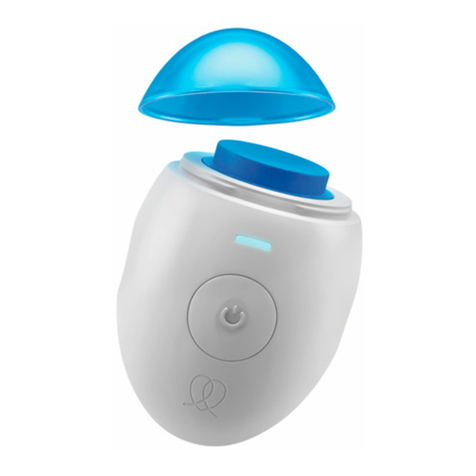
Respiri
Respiri Wheezo WZO01 quick start guide
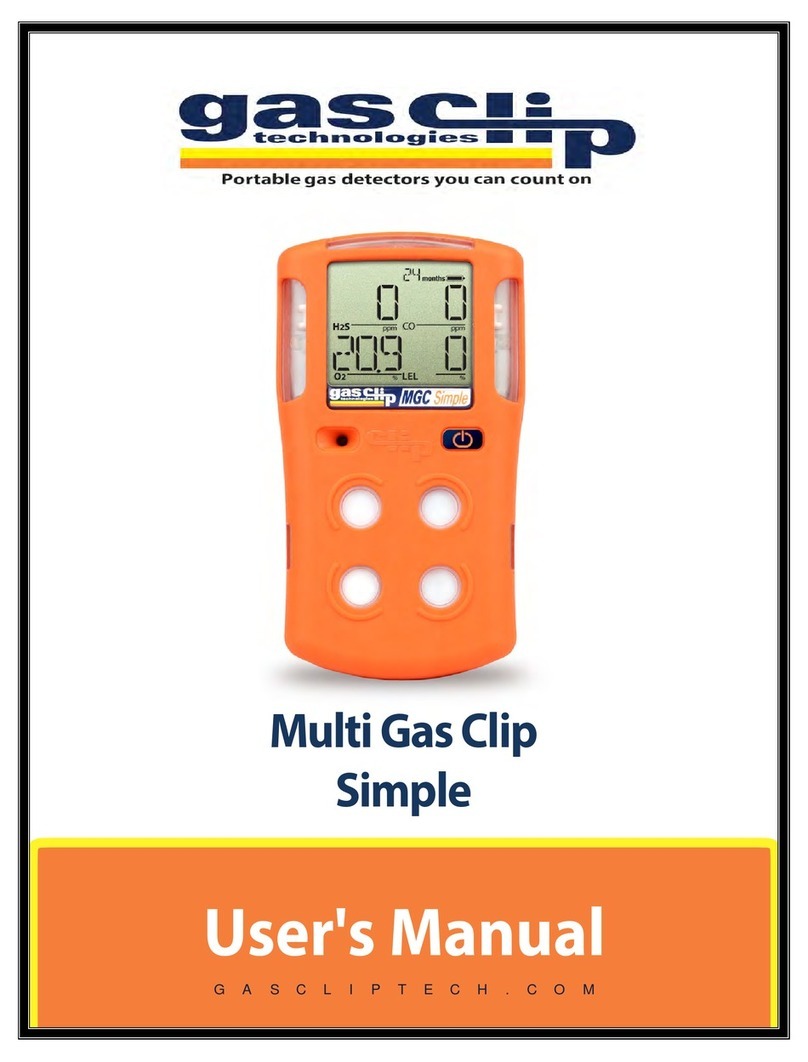
Gas Clip Technologies
Gas Clip Technologies Multi Gas Clip Simple user manual
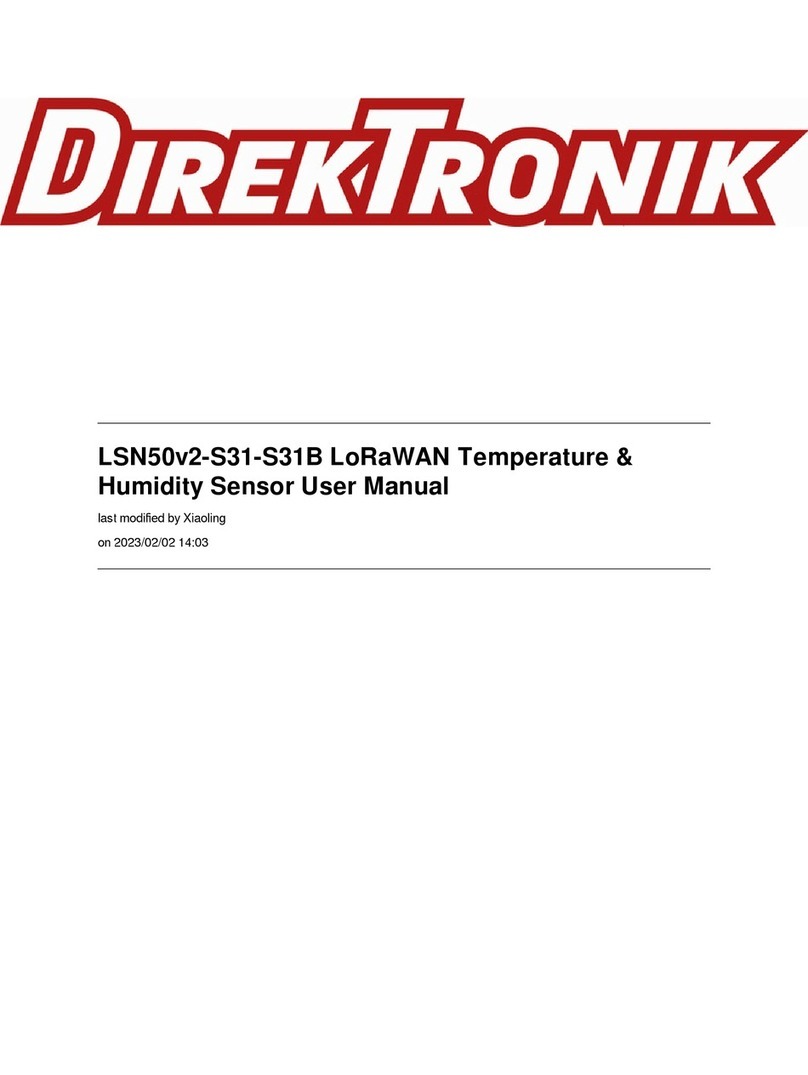
DirekTronik
DirekTronik LSN50v2-S31 user manual
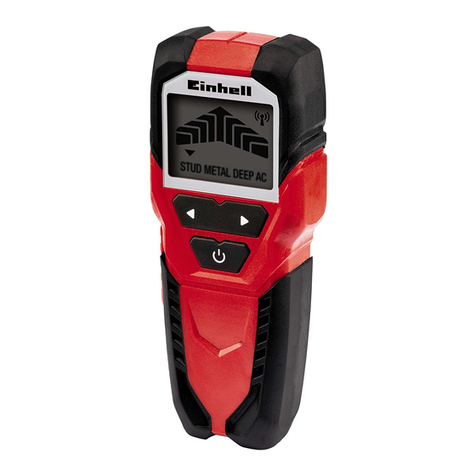
EINHELL
EINHELL TC-MD 50 Original operating instructions
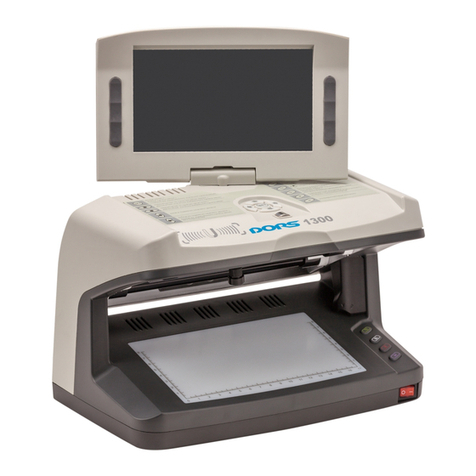
Dors
Dors 1300 user manual
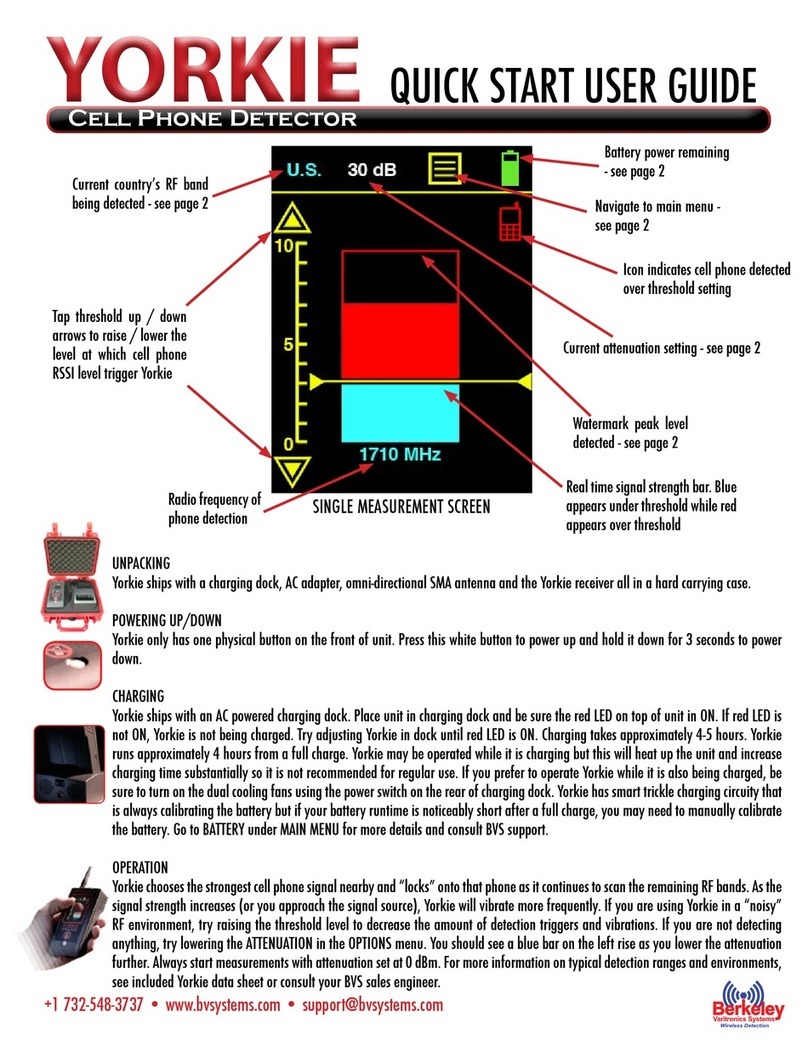
Berkeley Varitronics Systems
Berkeley Varitronics Systems Yorkie Quick start user guide
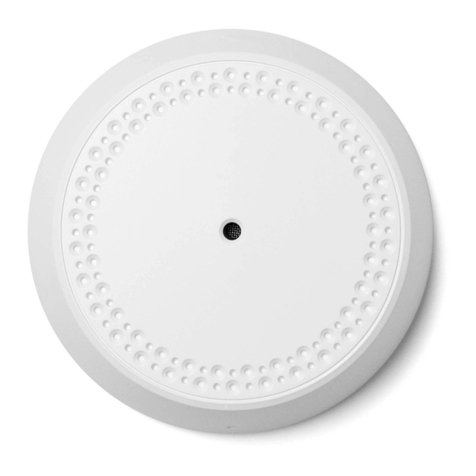
Honeywell Home
Honeywell Home PROSiX Series Installation and setup guide
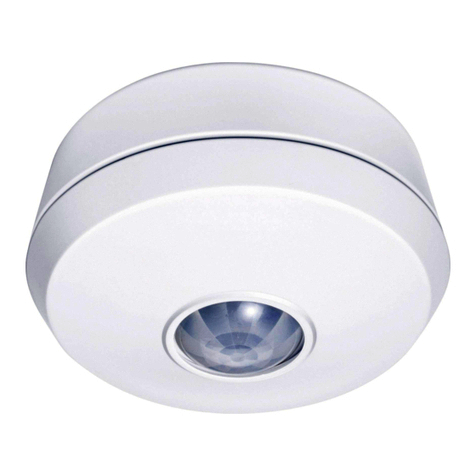
GEV
GEV LAB 018709 operating instructions
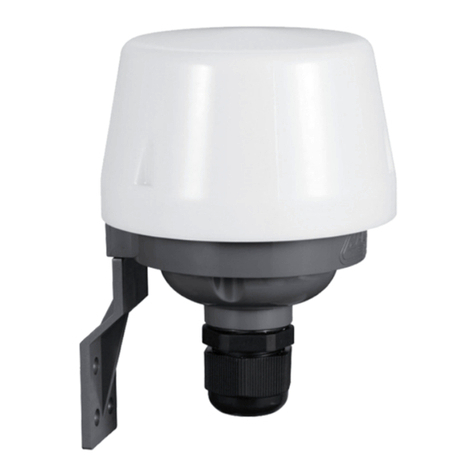
C-LOGIC
C-LOGIC 520-PC instruction manual

JOB
JOB detectomat HDv 300X TS Operation and installation manual
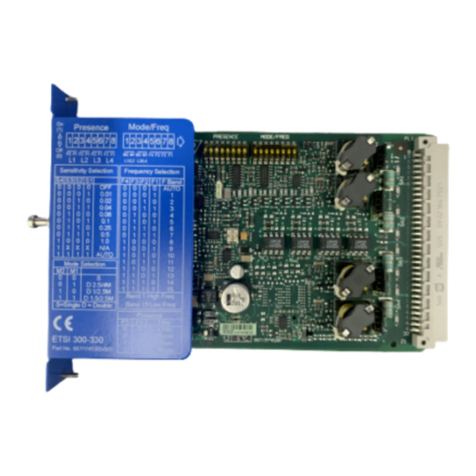
Siemens
Siemens SLD4 Application notes
Inficon
Inficon HLD6000 Translation of the original operating instructions
